Whether you are considering a livestock purchase or simply intrigued by the beauty and historical heritage of Texas Longhorns, here are 10 interesting facts about Texas Longhorn Cattle you may not know……….
Here’s a link to our SALEBARN for your own Texas longhorn.
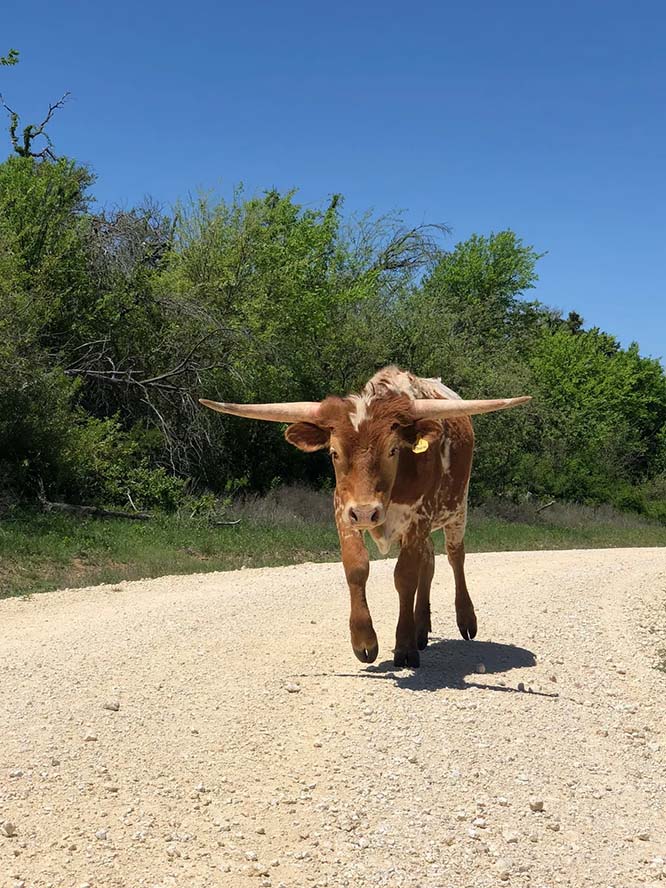
1. We often get asked if our Texas Longhorn cattle are dangerous. ( see our Farm Blog post : Are Texas longhorn cattle dangerous?)
Texas Longhorn cattle do have a reputation of being fierce but they can be, and generally are, very sweet. Having said that, we always treat them with respect. Those horns are strong and powerful and a Texas longhorn cow will use them if she feels threatened.
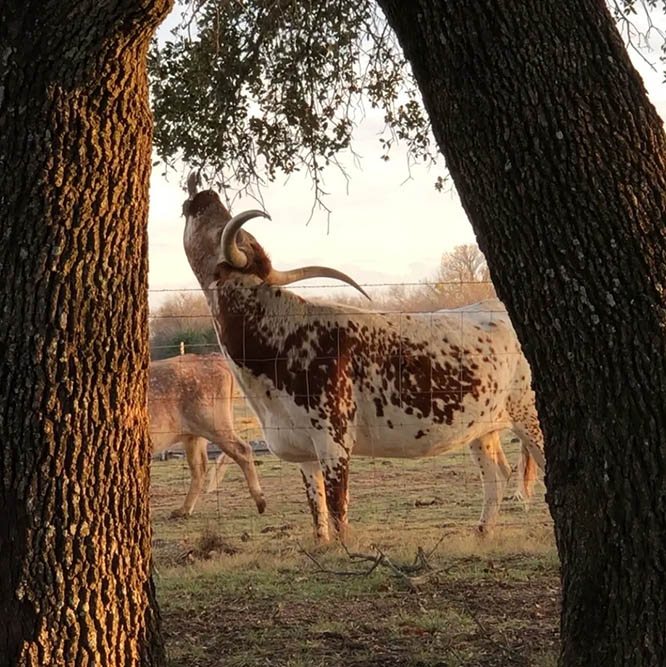
2. Texas Longhorn Cattle are NOT picky eaters.
A longhorn will forage on a variety of vegetation that other bovine breeds will not eat. Texas Longhorn Cattle graze grass and browse leaves simultaneously. In the right conditions, a longhorn requires less supplemental feeding and is therefore less expensive to maintain than many other bovine breeds. For more on feed and forage ( See our Farm Blog post 6 Tips BEFORE bringing your Texas longhorn calf home)
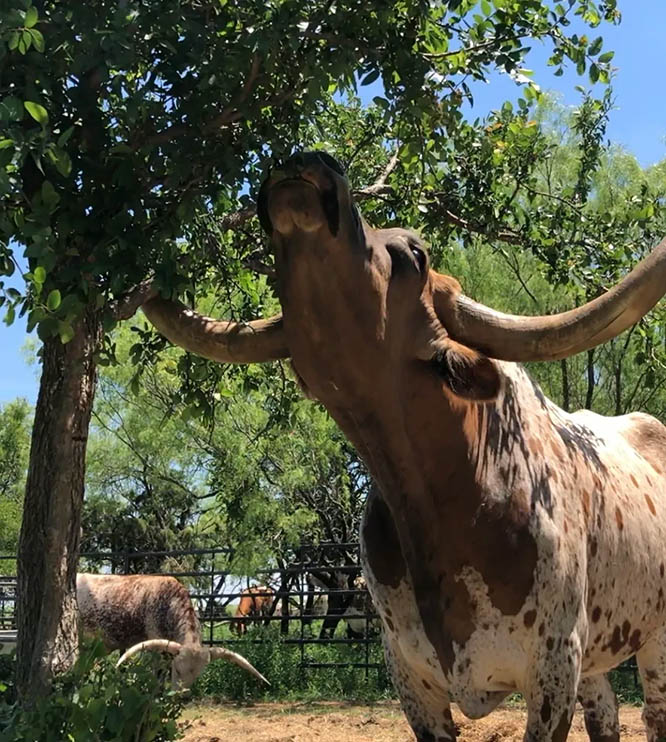
3. Texas longhorns have a natural immunity to disease.
Historically, Texas Longhorns underwent a process of Natural Selection. (see our History blog) They have an inbred resistance against disease. With the right care, Longhorn Cattle require less maintenance and cost less in Veterinarian fees. ( For more information on their resistance and immunity to disease READ HERE)
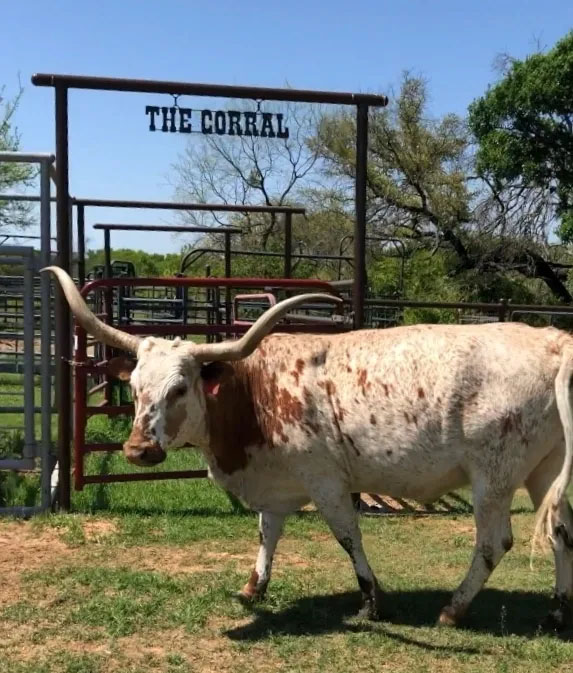
4. Texas longhorn cattle are a hardy breed.
Longhorn Cattle are able to tolerate extreme climatic conditions. They are adaptable to temperature changes. Our herd thrives in the intense heat of summer and manage well throughout the winter months.

5 Texas Longhorn Cattle have strong hooves and strong teeth and they are adaptable to harsh living conditions,
Over the decades we have watched our herd navigate through d severe drought conditions and flooding rains. They are good swimmers and are also sure footed. Our creek beds are rocky and our Texas Longhorn cattle have no problem crossing them.
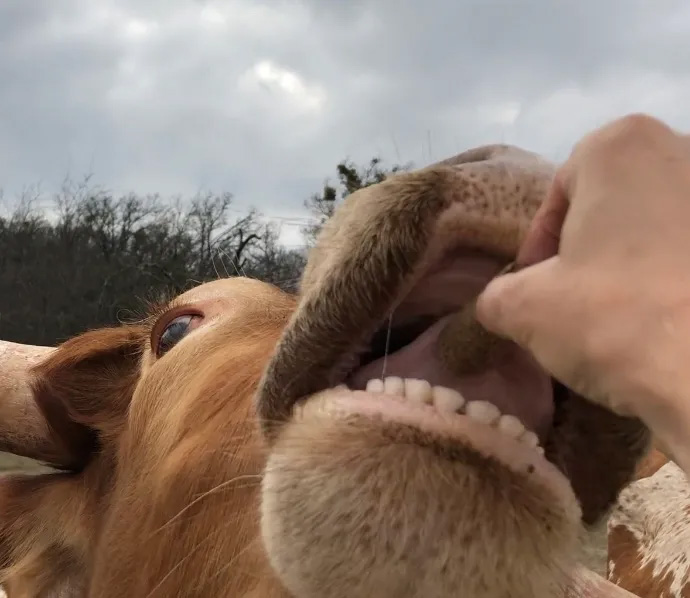
6 Longhorn cattle live longer, on average, than most other breeds of cattle.
Texas longhorn cattle can live beyond 20 years of age and remain productive throughout their life. On occasion, a longhorn’s age has been recorded beyond 25 and even 30 years.
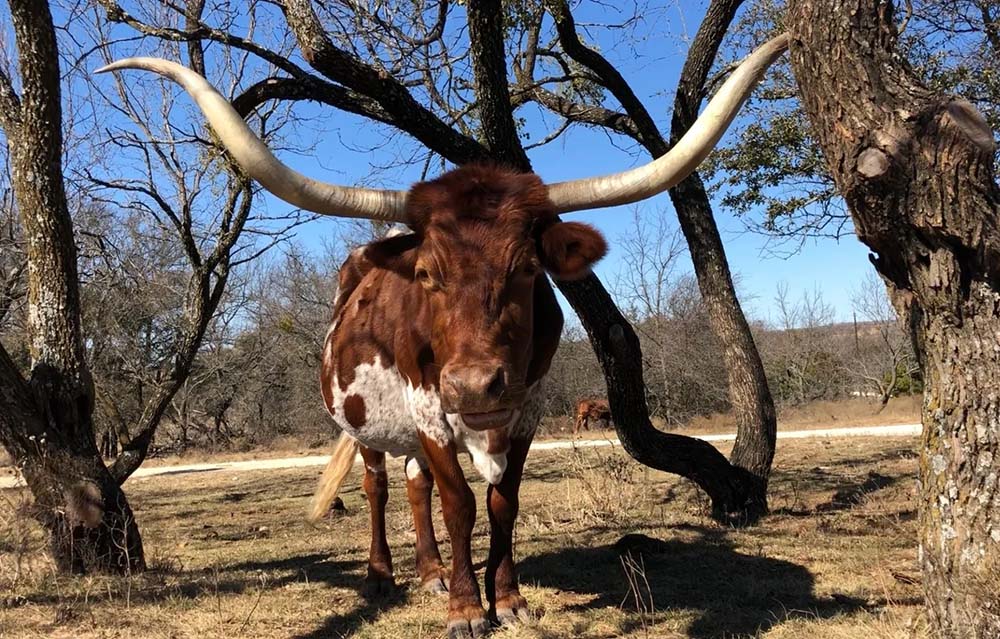
7. Longhorn cattle are known for their ability to calve with ease.
A Longhorn cow needs little or no help when she calves. She will produce a small robust calf. Small calves at birth allow for a less stressful birth on their mother, especially for first time moms. Further, Texas Longhorn calves are able to stand and nurse shortly after birth.
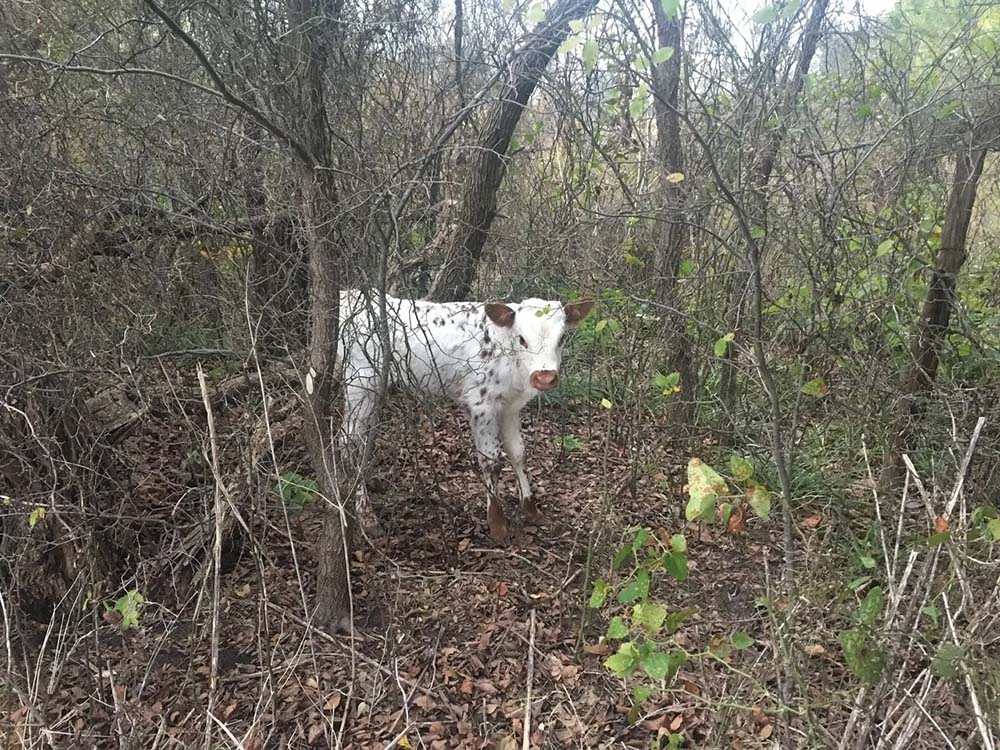
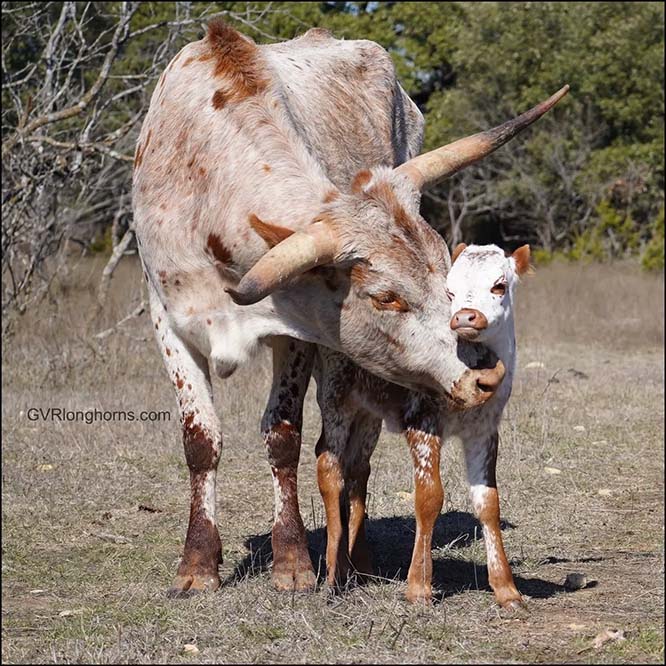
8. Longhorn Cows have strong maternal instincts.
They are exceptional mothers and they maintain noticeable bonds with their progeny over many years.
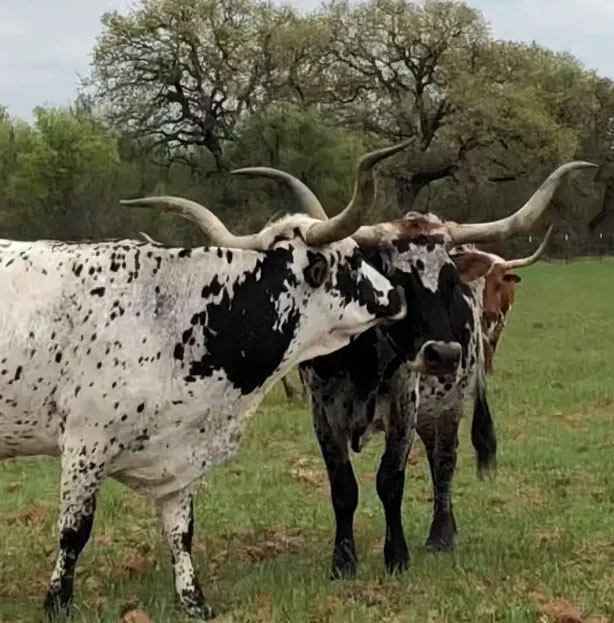
9. Longhorn cattle will not hesitate to protect their young and themselves when in danger.
One mother will often be left in charge to protect the nursery whilst the other mothers feed. We have witnessed a longhorn cow protect another cow’s calf when a coyote ran into her pasture and mom was not close by.
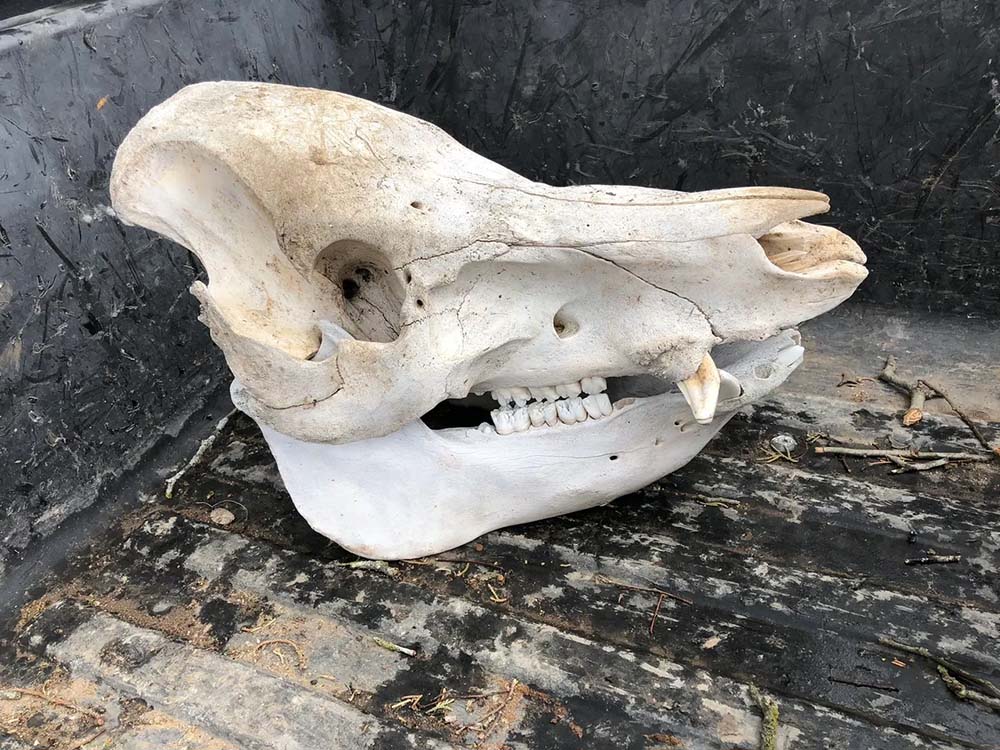
10 . Longhorn beef is naturally cholesterol free
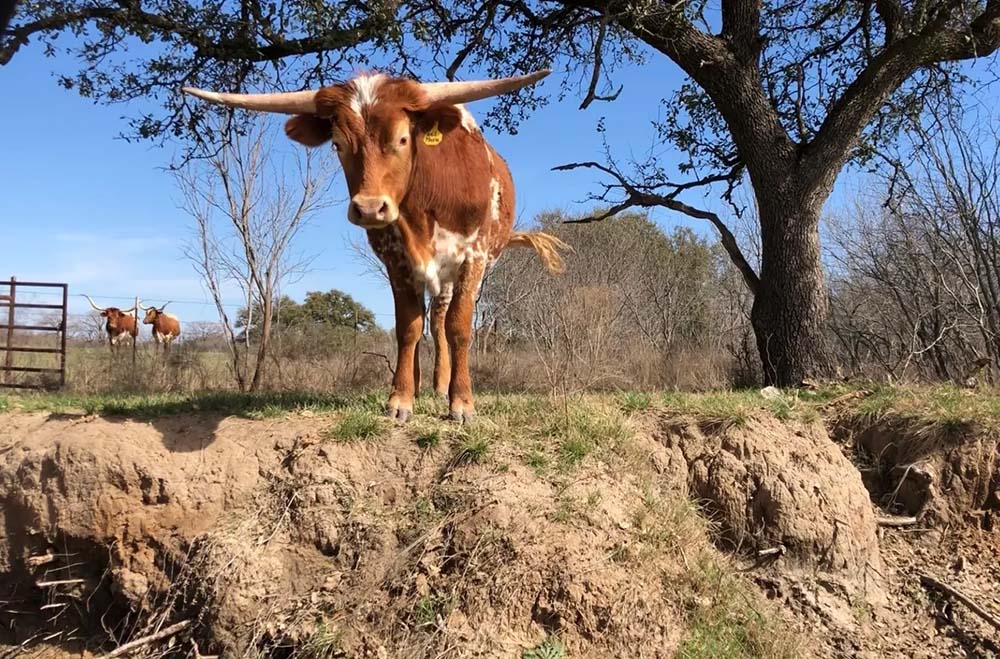
Texas longhorn cattle have long legs and less body fat. Their meat generally has less traces of cholesteral than regular beef. ( read here for more – Can you eat the Texas longhorn cattle you raise?)
Our Texas longhorn cattle are very intelligent. They are happy in a consistent routine and adaptable to change. If you enjoyed this post, you may enjoy reading some other distinguishing characteristics that set this breed apart from many others.
16 interesting facts: – The Texas Longhorn Cattle Breed
11 Habits of our Texas Longhorn Cattle Breed
From a Cow’s Eye View – 6 things to look out for
5 Traits a Texas longhorn should have to be a member of our herd
What do Texas Longhorn Cattle have in Common with a Goldfish?
Confessions from Lovers of Longhorns
– read what our customers have to say…….
For your own Texas longhorn, visit our SALEBARN
There are other notable advantages not listed above. Feel free to list them in your comments on our FACEBOOK page @GVRlonghorns.com.
Follow us on Instagram @GVRlonghorns
and let us know …….Did you know all ten facts about Texas Longhorn Cattle?
Disclaimer: All material noted above is based on our hands- on experience as farmers, as well as our observations of our own cattle over the years. We have done and continue to do extensive research in order to maintain our herd‘s optimum health. However, all opinions and statements made on our website are meant as guidelines only. We are not qualified veterinarians and urge you to consult a specialist with your concerns.
Content of this blog belongs to GVR Longhorns LLC and may not be copied in any form. ©GVRlonghorns.com All rights reserved.
References:
Dobie, J. Frank, The Longhorns, 1941, Little, Brown and Company, Boston.
Worcester, Don, The Texas Longhorn, 1987, Texas A&M University Press, College Station.
Texas Longhorn Breeders Association of America
International Texas Longhorn Association

